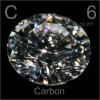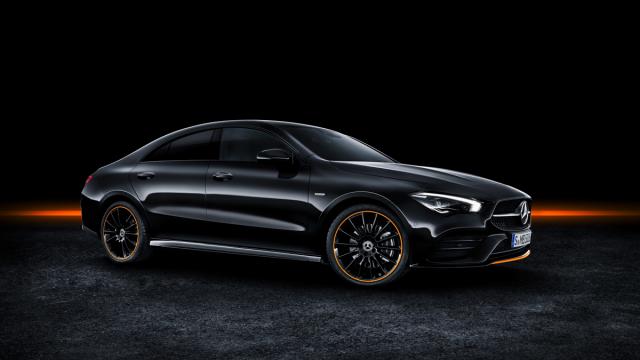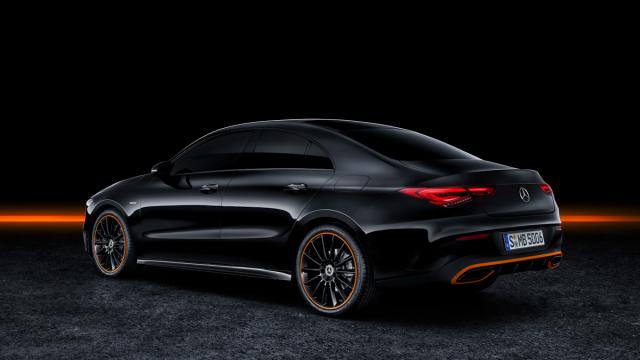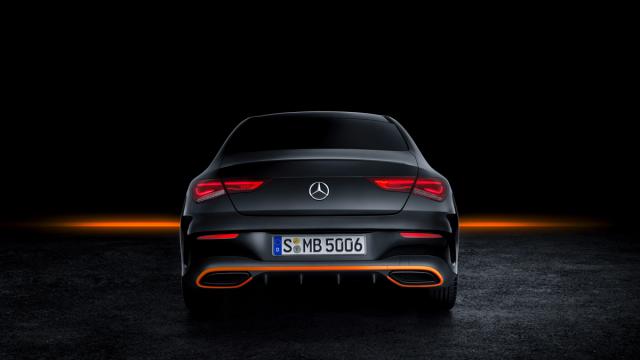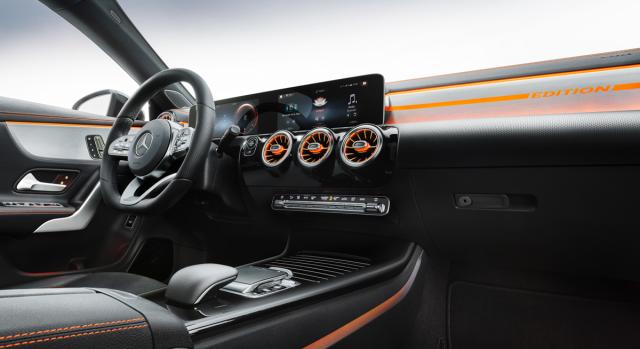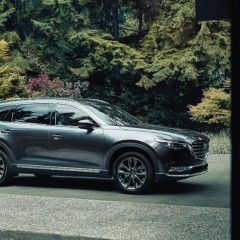Search the Community
Showing results for tags 'diesel'.
-
SINGAPORE — Singapore will stop all new diesel car and taxi registrations from 2025, by which time eight towns will have electric vehicle (EV) charging points at all Housing and Development Board (HDB) car parks. And, by 2030, all new car and taxi registrations must be of cleaner-energy models — including electric, hybrid and hydrogen fuel cell cars — to meet the country’s goal to phase out internal combustion engine vehicles by 2040. These were among the initiatives announced by Transport Minister Ong Ye Kung in Parliament on Thursday (March 4). They are part of the Singapore Green Plan 2030 charting the Republic’s environmental targets over the next decade. Mr Ong said: “In many countries, inter-city driving is common and that causes a lot of anxiety among EV users because they are afraid of battery depletion. “But with our urban environment, Singapore is quite ideal as a test bed for the rapid adoption of EVs.” The first eight “EV-ready towns” that will be equipped with charging points at HDB car parks are Ang Mo Kio, Bedok, Chua Chu Kang, Jurong West, Punggol, Queenstown, Sembawang and Tengah. The Land Transport Authority (LTA) said that these towns were chosen because they are well spread out across the island and have many car parks with existing electrical capacity that can support charging points. The authorities will build more charging points at other HDB towns and aim to make all towns EV-ready before 2040. Under the Singapore Green Plan unveiled last month, 60,000 EV charging points will be built by 2030, more than double the target of 28,000 set last year. Giving more details on Thursday, LTA said that 40,000 of these charging points would be in public car parks and the remaining 20,000 on private premises. They will be built first at public car parks where there is spare electrical capacity, before being expanded to other car parks. Mr Ong said the authorities would focus on building slow chargers, because fast chargers require a major upgrade of almost all power substations and grid infrastructure. Right now, some fast chargers can be found at petrol kiosks, shopping malls, and industrial and commercial sites. Mr Ong said: “Where the infrastructure supports it, or where we decide to selectively upgrade the infrastructure, fast chargers can then be installed.” Efforts to build EV charging points have already started, with LTA and the Urban Redevelopment Authority launching their first tender to build more than 600 charging points at over 200 public car parks in November last year. For non-landed private residences, such as condominiums, LTA will introduce an EV Common Charger Grant to co-fund the installation of 2,000 shared chargers between July this year and December 2023. More details will be announced in the coming months. The Government will ensure that all new HDB developments will cater enough electrical capacity to support EV slow chargers at 15 per cent of their parking spots at minimum, LTA said. t will impose this requirement on new private buildings as well as buildings undergoing major redevelopment in “due course”. LTA will also launch an industry consultation later this month to determine how the private sector can take part in building more public charging points. To spearhead the new initiatives, the government agency will set up a National EV Centre to drive the adoption of such vehicles in Singapore. The centre will work with government agencies, industry partners and unions to develop new EV-related technologies and equip workers with the skills to support the presence of more EVs on the roads. In the Budget statement last month, Deputy Prime Minister Heng Swee Keat said the Government would also lower the Additional Registration Fee floor for electric cars to zero between January 2022 and December 2023. The change would make electric cars more affordable as the floor is now set at S$5,000 under the EV early adoption incentive, which kicked in on Jan 1. Under that incentive, those registering fully electric cars are given a 45 per cent rebate on the Additional Registration Fee, capped at S$20,000. The Government will also adjust road taxes for mass-market electric cars, so that their owners may pay taxes comparable to those levied on owners with internal combustion engine cars. From next year, the road tax brackets of electric cars with power ratings of 30 to 90 kilowatt (kW) and 90 to 230kW will be merged. Cars falling into this combined bracket will be subject to the present road tax formula of the lower 30 to 90kW band. With this change, electric cars owners will pay up to 34 per cent less road tax, LTA said. For example, owners of a Hyundai Kona Electric or a Kia Niro — both with power ratings of 150kW — will pay S$1,095 in yearly road taxes, instead of the S$1,447 at present. Owners of the more powerful 225kW standard Tesla Model 3 will pay S$1,500 in road taxes, down from S$2,300. These changes will also apply to owners of hybrid petrol-electric cars who now pay road taxes based on their vehicles’ maximum electric power rating. The road tax brackets for cars with power ratings of less than 30kW and more than 230kW will stay unchanged. For owners of electric and hybrid cars who have paid their road taxes beyond 2022, excess taxes paid under the existing road tax scheme will be used to offset future taxes. If the vehicle is transferred to another owner before its next road tax renewal, excess road taxes paid will offset the transfer fee. The remainder will go to the vehicle’s new registered owner.
-
Good article by Mr Bean, and RADX please watch and please stop changing car so fast! Do your part as a living being! Thanks 😊
-
Hi, Would like to know how many will consider buying a EuroIV diesel car instead of the normal petrol car? The first consideration is of coz diesel car gives better mileage and maybe cheaper daily running cost. While car uses petrol is kind of rather standard on the cost of daily running. Your comments and thoughts plzzzzz...
-
Everything also can cheat. It is not only bad for our environment, but our health too. 😷 Source: https://www.straitstimes.com/singapore/transport/emission-cheating-devices-installed-in-some-trucks-and-buses-in-singapore SINGAPORE - Some diesel trucks and buses in Singapore have been fitted with devices that override the systems meant to clean up their exhaust emissions, The Straits Times has learnt. Popularly known as "defeat devices", they are sold online and allow vehicles to bypass emission standards and, in doing so, spew out high levels of nitrogen oxide - a poisonous greenhouse gas. Vehicle owners can save thousands of dollars each year by skimping on the exhaust treatment solution, known as AdBlue, which removes nitrogen oxide from diesel vehicle's exhaust emissions. At least one local workshop was found to offer an "AdBlue removal service", in addition to freelance mechanics who install such devices for a fee. In response to queries, the National Environment Agency (NEA) said it does not regulate the use of such cheat devices. But the agency, which sets vehicle emission standards here, added that it takes a serious view of devices that may bypass teh control of pollutant emissions. NEA also said it will work with inspection centres to monitor the use of such devices and enhance its regulations where necessary. It is not known how prevalent such devices are in Singapore. They are illegal in most European countries. Based on data from the Land Transport Authority, there are 172,996 diesel-powered vehicles as at Aug 31. The majority of those that are eight years old or newer would require AdBlue to operate properly. Diesel engine emissions include nitrogen oxide. When diesel vehicle is running, AdBlue, which is stored in a separate tank, is automatically injected into the exhaust system to convert the harmful fumes into nitrogen and water before the gases leave the vehicle's tailpipe. AdBlue is used in many diesel trucks and buses on Singapore roads. Globally, the exhaust treatment fluid is widely adopted by vehicle manufacturers to meet tightening emission standards. Keeping the vehicle topped up with AdBlue costs around 4 per cent to 5 per cent of the amount spent on diesel fuel. Commercial vehicles that clock high mileage will need to refill AdBlue more frequently. The solution is available at petrol stations as well as specialised AdBlue sellers. For private cars that do not cover so many kilometers, the top-up is usually done as part of the annual service at workshops. The price of Adblue is influenced by the rising cost of natural gas, a key ingredients used in its production. Currently, Adblue costs between $1.70 per litre to over $2 a litre, up 30 per cent from prices in 2021. In addition to saving on AdBlue refills, the cheat device enables the vehicle to be driven, even if the emission-control system is broken. Breakdowns can be caused by poor maintenance or by using lubricants that are meant for older diesel vehicles, which are cheaper to buy but are not suitable for these engines. Fixing such control systems is expensive. Mr Chew Guan Do, 62, who manages a fleet of trucks, said the bill easily exceeds $2,000 when control systems on the tipper trucks fail. Diesel vehicles also seem to need such repair more frequently as they age, adding downtime on top of hefty bills. There are different types of cheat devices - but their main function is to hookwink the vehicle's sensors to think there is AdBlue in the system when there is none. The simplest version of such devices, which are available online for as little as $40, plugs directly into a vehicle's diagnostic port. This type of devices, which takes the vehicle's emission-cleaning system out of play, can be removed before regular inspections. Experts said the vehicle will function normally and pass the tests, if it is otherwise roadworthy. A freelance engine-tuning expert, who spoke on the condition of anonymity, said he has programmed a truck's computer to bypass the emission control system and has not had any issues. Many of these hacks promise improved fuel efficiency and increase engine performance. With the added horsepower, the engine will produce even more poisonous exhaust gases.
-
To work in Singapore, it need 2 additional features: Which route can siam ERP Where has free parking BTW, I do support this initiative by Google, and this is one of the way to go green. Source #1: https://www.theverge.com/2022/9/7/23339954/google-maps-eco-friendly-routing-expanding-europe-fuel-types Source #2: https://blog.google/around-the-globe/google-europe/eco-friendly-routing-in-europe/ Google is expanding Maps’ eco-friendly routing mode, rolling the feature out in dozens of European countries and making it even more powerful by letting you pick what type of fuel your car runs on. The feature, originally launched in the US and Canada last year, will highlight routes that use less energy if they have a similar ETA to other alternate routes. Google says that starting today, it is rolling out to users in “nearly 40” European countries, including France, Ireland, Poland, Spain, and the UK. (It was introduced in Germany last month.) Google’s also adding the ability to tell Maps if your car has a diesel, gas, hybrid, or electric powertrain, so it can find the most efficient route for your specific type of vehicle and provide more accurate estimates on how much more efficient the eco-friendly route is. The system is built on information pulled from the US Department of Energy’s National Renewable Energy Laboratory (NREL) and European Environment Agency, combined with Google Maps driving trends to train machine learning models based on the most popular engines in given regions. Using an example from Google’s blog post, this could mean that people with diesel-powered vehicles will be routed along a high-speed freeway, where their engines will be most efficient, whereas someone with a hybrid or electric vehicle might get suggestions including surface streets where they can take better advantage of regenerative braking. Helping you make sustainable choices with Google Maps and beyond Whether you’re staying local or traveling, Google can help you get where you need to go more sustainably with a few helpful tips: It’s electric! If you have an electric vehicle, just search for “EV charging station” on Google Maps to see charging stations nearby, along with helpful details, like port types and charging speeds. And for some stations, you can even see if a charger is available right now, helping you avoid the wait and save valuable time. Swap four wheels for two. Often, the most sustainable choice doesn't involve a car at all, and Google Maps can help you with alternate ways to get around. We recently announced more cycling route information, including a more detailed breakdown of your route and whether you’ll encounter heavy car traffic, stairs or steep hills on the way. And you can find nearby bike and scooter shares in over 500 cities around the world including Barcelona, Berlin, London, Paris, and Rome. Walking the walk. Google Maps offers turn-by-turn directions for pedestrians. To ensure you’re not walking the wrong way, Live View uses augmented reality to display arrows and directions clearly overlaid on the map. Plus, you can preview your walking route with Street View. Navigate public transport with ease. By tapping on the transit icon in Directions, you get directions to your destination by bus, train, subway and even ferry. When available, you can see real time arrival and departure times, transfers, and service delays. And Google Maps gives you all the information you need to be prepared, like how crowded your ride will be, what the temperature is like, and if there are wheelchair-accessible routes available. Sleep more sustainably. Google Search helps you find hotels that have made significant commitments to green practices. Hotels that are certified for meeting high standards of sustainability from certain independent organizations, like Green Key or EarthCheck, will have an eco-certified badge next to their name. This helps you understand their eco-friendly practices, from waste reduction to energy efficiency to water conservation measures.
-
Source: https://www.todayonline.com/singapore/explainer-why-are-singapores-fuel-pump-prices-record-highs-and-what-does-it-mean-economy-1813266 Petrol and diesel prices in Singapore have hit record highs. Pump prices of petroleum and diesel in Singapore are now higher than ever in dollar terms, not adjusted for inflation On Feb 8, taxi operator ComfortDelGro announced that it is raising its fares due to inflation and rising fuel costs Crude oil prices are rising, but they have not reached the same record highs in 2008 or 2014 The disparity between crude oil and petroleum prices is because petrol costs depend on more than just the cost of crude oil Economists said higher energy costs could lead to sustained inflation that could affect economic growth SINGAPORE — Fuel prices at the pump have risen to their highest level on record in recent weeks, in the midst of an unabated hike in global crude oil prices due to a supply crunch and geopolitical turmoil in Europe. As of Monday (Feb 7), 92-octane petrol cost up to S$2.70 a litre, 95-octane petrol went for up to S$2.76 a litre, while 98-octane petrol surged past the S$3 barrier to reach up to S$3.25 a litre, based on figures by online price tracker Fuel Kaki, a project by the Consumers Association of Singapore. Diesel prices, too, have reached a new high. Each litre of diesel cost between S$2.26 at SPC and S$2.33 at Shell stations as of Feb 7. This means that fuel in Singapore now costs more than it ever did in terms of the quantum, not adjusted for inflation. The previous peak was in November last year when diesel was S$1.96 a litre, 92-octane was S$2.42, 95-octane was S$2.46 and 98-octane was S$2.97, official monthly data showed. On Tuesday (Feb 8), ComfortDelGro announced that it will raise its taxi flagdown fares across its entire fleet of taxis by 20 cents from March, due to rising fuel costs and inflation. The news comes as oil prices have climbed to the highest point last month since 2014, with the Brent benchmark for crude oil reaching as high as US$93 a barrel on Feb 7, before tapering down to US$92 a barrel the next day. Crude oil had hit US$110 a barrel in 2014. The oil rally came as part of a perfect storm of factors, including a prolonged underinvestment in the oil industry and lagging production that is slow to meet current demand, as well as geopolitical factors. There has also been a structural shift towards green energy investments at the expense of oil, gas and coal. Newsweek magazine reported last year, for instance, that regulators in Europe have aggressively shut coal plants. Some banned fracking (short for hydraulic fracturing, a method of getting oil or gas), while others have refused to invest in nuclear energy, putting Britain and the European Union at the mercy of renewable energy and natural gas, most of which comes from Russia. Should armed conflict break out between Ukraine and oil-producing Russia, which also supplies oil to Europe, the price of crude oil and its refined products such as petrol will undoubtedly rise, experts said. Mr Ravi Krishnaswamy, senior vice-president of energy and environment for the Asia Pacific at market research firm Frost and Sullivan, said: “Clearly, that scenario will rattle markets and could push the prices above US$100 per barrel, and perhaps even US$120.” WHY PETROL PUMPS DON’T MATCH OIL PRICES In any case, oil prices have yet to reach historic highs, such as during the oil price bubble in 2008 when each barrel of crude oil cost US$147. So what explains the record-high pump prices in Singapore? For one thing, the price of petroleum is affected not only by the per-barrel cost of crude oil, but other factors as well. The Covid-19 pandemic, shipping woes and supply chain issues, as well as the rising cost of non-oil raw materials has led to global inflationary pressures that affect costs across the board, including the cost to refine oil into petrol. Last October, the surging price of natural gas threatened to swallow the profits of oil refiners and force them to reduce fuel production, news agency Bloomberg reported. Oil refineries rely on the hydrogen from natural gas — methane, in particular — to eliminate sulphur during the diesel production process. Among other things, crude oil is also refined into jet fuel, which suffered from a drastic loss in demand when aviation was decimated during the Covid-19 pandemic. Producers then cut back on pumping oil, which also has an impact on raising the costs of petrol production. Distribution and marketing costs, which were affected by a diminishing workforce of fuel truck drivers in many parts of the world during Covid-19 shutdowns, also contributed to keeping pump prices high, experts said. And then, there are petrol taxes. In February, Singapore hiked petrol duties by 15 cents a litre for premium petrol and 10 cents a litre for intermediate petrol, as part of the Budget 2021 measures. This followed a petrol tax hike in 2015, when rates were raised by 20 cents for for premium petrol and 15 cents a litre for intermediate petrol. Deputy Prime Minister Heng Swee Keat said last year that the increase in petrol taxes based on usage is meant to shape consumer behaviour towards a more efficient use of fuel or environmentally friendly alternatives. Altogether, crude oil costs make up around half of the retail cost of petrol, the American Fuel and Petrochemical Manufacturers estimated last year. Another reason why pump prices may not track closely with crude oil benchmarks is because petrol retailers base their prices decisions on the Mean of Platts Singapore (Mops) price, which is the price at which petrol retailers buy refined wholesale petrol from the refineries. In 2015, the Competition Commission of Singapore sought to find out the decision-making of petrol retailers following public feedback that listed petrol prices did not rise and fall with crude oil prices. Its report in 2017 concluded that “listed petrol prices do not reflect wholesale price movements completely and immediately”, often adjusting their prices in tandem with the Mops price for an average of eight days for price increases, and six days for price decreases. Mr Krishnaswamy said that some petrol retailers also have long-term contracts with refiners, and likewise between refiners and oil importers, which has an effect on this lag time as well. Integrated companies such as Shell, however, control the entire chain and thus have a different calculus. “There will be a lag effect, because the pump prices are not directly linked to crude prices, and they are determined independently by the companies, some of which are refiners and some are retailers,” he added. WHAT TO WATCH OUT FOR The rise in petrol cost will impact vehicle users directly. Private transport prices, which are affected by petrol costs and vehicle prices, grew by 15.5 per cent last December, continuing a double-digit percentage point inflation that began in April 2021. But oil prices are also closely linked to business input costs, since much of the world’s commerce and trade depends on transportation and travel. This could also be passed on to consumers, experts said. Mr Song Seng Wun, an economist with CIMB bank, said that rising energy prices is one key reason why the prices of most things, across all categories of goods and services, are going up. “We’ve seen food prices go up recently, because it costs more to put food and drinks on your table. And all manner of other things, too, including construction, travel, manufacturing of products — they are all affected by higher energy prices,” Mr Song added Mr Krishnaswamy said that this is why Monetary Authority of Singapore is looking to counter rising inflation. Last month, the central bank unexpectedly calibrated its monetary policy to cater for inflation in an off-cycle move. The worry will be that a sustained rise in input costs, and thus prices, could ultimately dampen demand and affect economic growth, Mr Song said. This could set back the already fragile nature of post-pandemic economic recovery. If this is combined with rising unemployment, it could lead to an undesirable outcome known as stagflation, which is a dangerous combination of high inflation and unemployment, and a weak economy. Thankfully, given the tight labour market here and around the world, this does not appear to be the case today, Mr Krishnaswamy said. “I don’t see stagflation panning out in Singapore or globally, perhaps only in some markets where that can happen. That said, it is worth watching out for that in the medium term.”
- 59 replies
-
- 7
-

-

-
.png)
-
- today
- fuel price
-
(and 2 more)
Tagged with:
-
SPIED! MERCEDES-BENZ CLA SHEDS SOME CAMOhttps://www.motortrend.com/news/spied-mercedes-benz-cla-sheds-some-camo/ Just a few months ago, our spy photographers caught a next-generation CLA prototype out testing, possibly in AMG form. Now, the CLA has returned wearing a different grille and less camouflage. Though that earlier prototype appeared to wear Mercedes-AMG's Panamericana grille, this CLA sports a front end inspired by the CLS-Class. The camouflage obscures the shape of the headlights, but the LED accents look similar to those of its swoopy big brother. It's also safe to say the taillights have changed. Unless the camo is fooling us, the rear end looks more upright than before. Overall, the new model looks longer than its predecessor. A few interior shots reveal a more streamlined cabin. This prototype features one large screen that runs across the dashboard, replacing the two separate screens for the instrument cluster and infotainment system. The circular vents take on a different look, and there is now a simpler array of buttons just below. Red contrast stitching and a flat-bottom steering wheel hint at AMG roots, but this car doesn't look like an AMG from the exterior. It's possible Mercedes will offer some sort of AMG interior package, or that this prototype is just a mixed bag of parts. According to Autocar, Mercedes has confirmed it will launch the CLA and CLA Shooting Brake next year. We don't know Mercedes' exact plans for the U.S. market, but the model will likely slot above the new A-Class with a sleeker coupe-like profile. The interiors of the A-Class and CLA should be very similar. The CLA could share engines and gearboxes with the A-Class. Our A-Class comes with a 2.0-liter turbo-four making 188 hp and 221 lb-ft of torque, which is paired with a seven-speed dual-clutch automatic. An AMG version of the A-Class is also very likely coming to the U.S., although it's unclear how much power it will make. Photo source: CarPix
- 145 replies
-
- 2
-

-
- mercedes-benz
- cla
- (and 10 more)
-
I was contemplating a switch over to diesel engine car + aesthetic/ handsome look of DS5, heard engine clatter while on start, goes off when running gear, anyone care to share more on likes/ dislikes, performance and bad vibes. Understand the french are good in fashion designs and culinary delights, but comes to car technology, it's a different piece of cake altogether, not particularly in favour of Peugeot or Renault, however have seen Peugeot 5008, priced $132K. Thank U
- 54 replies
-
- citroen
- share tips
- (and 6 more)
-
BMW ALPINA announces updated pricing, new hybrid diesel for 2021 XD3 in Australia source: https://www.bmwblog.com/2020/08/24/2021-alpina-xd3-hybrid-diesel/ For the 2021 model year, the Australian BMW ALPINA XD3 comes with a new 48-volt, mild hybrid diesel powertrain and some improved equipment. The XD3 models for 2021 will be available starting early next year, at a price of AUD 114,990 including the on-road costs. It thus costs AUD 5,000 more than the outgoing 2020MY XD3 (AUD 109,990). For 2021, the new BMW ALPINA XD3 adopts a new 3.0-liter, straight-six diesel engine with MHEV technology in the form of a 48-volt starter alternator. The inline-six diesel with mild hybrid electrification boasts a maximum output of 261 kW / 355 PS (350 hp) and delivers a peak torque of 730 Nm. Power is sent to all four wheels through the ZF 8HP75 8-speed sports automatic gearbox with torque converter with ALPINA SWITCH-TRONIC. As per ALPINA statements, the 48-volt mild hybrid technology has brought substantial benefits in the areas of throttle response and an average fuel consumption of 8.2 l/100 km in WLTP cycle. The list of standard/optional equipment and accessories for the 2021 BMW ALPINA XD3 has also been enriched with several new additions as follows: standard panoramic sunroof (previously: optional equipment for an extra AUD 2,690) standard electric seats with LAVALINA leather upholstery standard contrasting stitching in ALPINA green and blue colors, ALPINA door sills and a production plaque made from metal optional Black Piano ornaments with 3D ALPINA logo BMW Live Cockpit Professional offered as standard, featuring the specific ALPINA interface standard DAB Tuner standard ALPINA Body kit for the exterior of the car standard 20-inch ALPINA CLASSIC light-alloy, multi-spoke wheels optional 22-inch ALPINA wheels standard 3-year warranty and roadside assistance (unlimited kilometer range) As per latest official details, deliveries for the new 2021 BMW ALPINA XD3 are scheduled to commence in early 2021.
-
Japan Could Ban Sales Of New Gasoline, Diesel Cars In Mid-2030s: Report source: https://www.motor1.com/news/458668/japan-gasoline-diesel-cars-ban/ The country's industry ministry is expected to formalize the deadline soon. The mechanism to curb the effects of climate change is not showing signs of a halt. And of course, the automotive industry, which admittedly contributes to the current mess, is finding ways to reverse the adversities, mostly by switching to selling electric and hybrid vehicles – or at least they won't have a choice. Japan is the latest country to announce a deadline to ban the selling of new gasoline- and diesel-powered cars. This is according to NHK, the country's public broadcaster, and relayed in a report by Reuters. According to the report, Japan is eyeing the mid-2030s for the deadline and is expecting automakers to comply by not selling new fossil fuel-powered vehicles by the said period. It's important to note that Prime Minister Yoshihide Suga has pledged in October that Japan will have zero emissions by 2050 on a net basis. With this, the Land of the Rising Sun is joining the other countries that have set a deadline. Britain, Norway, and Germany have announced so recently, as well as some parts of the United States and Canada. Automakers have already responded to this cause a long time ago, that's why there are more hybrid and electric vehicles now more than ever. These companies know that this is the future, and switching over to electrified vehicles will make them future-proof, as they say. Japan's new deadline, however, will put pressure on its homegrown automakers like Toyota, Honda, Nissan, and Mitsubishi to hasten the R&D timeline for electrification. We've seen new Japanese models, such as the Nissan Ariya EV crossover, this year, so expect more in the near future. NHK reports that Japan's industry ministry is expected to give a formal target for the sales ban by the end of this year.
-
Just curious, if there are some engine oil left-over from a car's servicing, can it be used to top-up a diesel engine ? (e.g. Shell Helix Ultra 5w-40)
-
Looking at 7 seater cars which are running on Diesel. Currently driving a Volvo S80 D2 which runs on Diesel and i like that it is fuel efficient. Now i am intending to change to 7 seater variant and looking for inputs from fellow members here.
-
11 Reasons Why Diesel Trumps Gasoline source: https://www.drivingline.com/articles/11-reasons-why-diesel-trumps-gasoline/ Occasionally, we like to stir the automotive pot, and this one is sure to do it! It’s the age-old diesel vs. gas debate—and it’s guaranteed to get a few of you into a verbal throw down. While both forms of propulsion have their place, diesel tends to dominate when big jobs have to be tackled as efficiently and reliably as possible (hence its preferential use in the military, construction, transportation and railroad industries). On the racing scene, gasoline engines have long held the throne in most categories. However, in recent years, diesel technology has advanced at a rapid pace, which has only promoted further versatility—namely in 3/4-ton and 1-ton trucks. No longer are these oil-burners limited to workday chores. It’s now common to spot an 8,000lb, diesel-powered Ford, GM or Ram tearing through the quarter-mile in 13, 12, 11 and even 10-second intervals. Diesels have also begun to draw large crowds at chassis dyno competitions and headline the biggest sled pulls in the country. Once upon a time, the Audi R10 TDI even infiltrated (and dominated) the esteemed Le Mans racing series. So, with diesel excelling in so many key areas, is it the better engine choice? Judging by the title, it’s pretty clear which side yours truly plays for, but whose side are you on? Diesel or Gas? 1. High Compression = More Power & Better Efficiency What do OEM manufacturers, aftermarket enthusiasts and all-out race teams do to increase power and efficiency in their gas engines? They up compression. Diesels range from roughly 16.5:1 to 19:1 vs. gasoline’s typical 9:1 to 10:1. This means higher cylinder pressures (hello torque), a cleaner in-cylinder burn and—being that diesels rely on compression ignition rather than spark—no worry of pre-ignition or detonation. 2. No Throttle Plate Unlike a gasoline engine, a diesel doesn’t have a throttle plate (which should more appropriately be labeled a “restriction plate”). This means a diesel’s cylinders are packed completely full of air during every intake stroke, regardless of the driving or operating conditions. By contrast, the only time a gas engine breathes this well occurs under wide-open throttle instances. A lack of throttle (restriction) plate also means no pumping losses for the diesel engine. Did you know a gas engine expends as much as 40-percent of its total power output trying to overcome its own air (throttle) restriction? 3. Any-Purpose Engine No other internal combustion engine is as versatile as a diesel. For instance, only a diesel-powered pickup can be used as an all-in-one work truck, tow rig, sled puller, drag racer and daily commuter and remain as reliable as it was the day it left the factory. There are thousands upon thousands of diesel trucks making 500hp (1,000 lb-ft) or more that serve all of the above functions, not to mention that four-wheel drive models offer year-round drivability and off-road capability. The allure of a diesel engine is its do-anything nature. 4. Better Ingredients Because diesels feature high compression ratios, see high cylinder pressures and are typically turbocharged—they’re built with burlier parts to withstand all the stress. This means premium items like forged-steel connecting rods, four-bolt mains, six head bolts per cylinder, compacted graphite iron blocks... even bed plates make it into a lot of diesel engines. As well, nearly all heavy-duty diesel engines are gear-driven (no timing chains or belts). 5. Leaner Air-Fuel Ratio When you run a gasoline engine too lean you kill its power potential, run the risk of overheating or worse, melting a piston. In an effort to cool down combustion, gas engines will dump extra fuel at wide-open throttle. The complete opposite is true of a diesel. Lean out the fuel and the engine runs cooler. Add fuel to the mix and combustion temps and exhaust gas temperature goes up. This is why diesels run a leaner air-fuel ratio than gas engines. In fact, some diesels utilize an air-fuel ratio as high as 90:1 or 100:1 at idle. Optimum gasoline air-fuel mixtures usually check in around 15:1, while most diesels operate at 18:1 or higher. 6. Better, Safer Fuel Diesel fuel’s chemical makeup makes it at least 15-percent more energy dense than gasoline. On top of that, diesel fuel is oil-based, which essentially makes it a lubricant when introduced to cylinder walls. By contrast, gasoline is a solvent. Gasoline is also much more volatile than diesel (i.e. more explosive/flammable), which makes diesel much safer in the event of an accident. 7. They Aren’t Picky Eaters Being that diesel is an oil-based fuel, it shouldn’t come as a surprise that virtually any oil-based alternative can be burned. We’ve seen diesel engines running on vegetable oil, grease, used engine oil and even automatic transmission fluid. But the diesel engine has always been capable of operating on alternative fuel sources. Case in point, the original diesel engine was designed to run on coal dust, but Rudolf Diesel subsequently found that it would also run (much more safely) on peanut oil. 8. Most Powerful The most powerful engine in the world is diesel. Measuring approximately 90-feet long, 44-feet high and weighing some 2,300 tons, the Wartsila-Sulzer RTA96-C cranks out 109,000hp. The Finnish-designed, 14-cylinder, low-speed two-stroke diesel behemoth spins a maximum of 102 rpm, but generates as much as 80,080 KW of power—enough to power a moderately sized suburban town. Fitting for the world’s largest engine, the Wartsila-Sulzer RTA96-C is used to propel the largest ocean-going vessels in the world, such as 1,300-foot long, 70,000-ton cargo ships. 9. Big Torque at Low RPM Thanks in part to the extreme cylinder pressures they see, most diesel engine’s produce their peak torque figure at or below 2,000 rpm. This not only makes diesel the ideal means of getting heavy loads up and moving quickly, but makes it easier for them to maintain speed while out on the highway. An abundance of low-rpm torque is also why 8,000lb diesel trucks can cut 1.5 to 1.8-second 60-foot times at the drag strip. While most gas power plants are just beginning to come to life between 3,000 and 4,000 rpm, a diesel is ready for the next gear. Living life at a lower rpm also lends itself to a diesel engine’s long-term durability. 10. A Mechanical Diesel is the Ultimate Doomsday Engine Older, mechanically injected diesel engines are stupid simple and require virtually zero electronics to run. Once started, all a fully mechanical diesel needs to stay running is a steady supply of fuel. There is no need to worry about air, as once you fuel the engine the air will follow. If things ever go dark, you’ll find us driving something with a 12-valve 5.9L Cummins under the hood. 11. Diesel Makes the World Go Round Frankly, if diesel isn’t superior to gasoline, why do the construction, trucking, shipping, railroad, aviation and mining industries rely on it almost exclusively? And why does every branch of the military depend on it? It’s because diesel is more efficient, powerful, reliable and versatile. With the power of diesel, you can travel farther, get more work done and even use an alternative fuel source if you have to. So, still think gas is best? Or is electric now the future? Join the conversation in comments below.
-
Saw the road show in vivo city, the frugality is amazing...what do you think? i think diesel is the way to go green!
- 231 replies
-
- 1
-

-
Anyone driving a diesel car ?
-
https://edition.cnn.com/2019/06/23/business/daimler-earnings-expectations/index.html New York (CNN Business)Daimler, the German auto company that makes Mercedes-Benz, has slashed its 2019 profit expectations by hundreds of millions of euros. The financial downgrade, announced Sunday, is the latest fallout from the diesel emissions scandal that has rocked the German auto industry. The company said that "various ongoing governmental proceedings and measures relating to diesel vehicles" will affect the company's second quarter earnings. It said it expects an increase in expenses related to those proceedings. Daimler said its profit for 2019 will be close to last year's level. Shares in the carmaker declined 3.6% in Frankfurt on Monday. The stock has dropped nearly 20% from a recent high in April. German automakers have faced years of scrutiny regarding harmful emissions that diesel vehicles produce. That scrutiny stems from a 2015 admission by another German automaker — Volkswagen (VLKAF) — that it rigged millions of diesel engines to cheat on emissions tests. The revelation trashed confidence among consumers and regulators in diesel technology and cost Volkswagen tens of billions of dollars in recalls, legal penalties and settlements. ****** Lets see if there is a large an outcry from merc owners. Will the resale value drop and what will the second hand car dealer use. Merc no resale value. Buyer dont want to be associated with a brand with low integrity ?
- 7 replies
-
- 1
-

-
- mercedes-benz
- mercedes-benzemission
- (and 6 more)
-
The new Mercedes-Benz CLA Coupé is not only the most emotional vehicle in its class, it is also highly intelligent: From MBUX Interior Assist, which recognises operational demands from gestures and equips the interior with intelligence, through augmented reality for navigation and understanding indirect voice commands to the ENERGIZING COACH that provides individual fitness recommendations, the new CLA offers an array of clever solutions. There are also ingenious details when it comes to the aerodynamics and new functions for the Intelligent Drive driving assistance package. The design underlines the coupé character with its stretched form and design elements such as the bonnet with powerdomes or the rear licence plate which has been moved down. As such it does justice to its predecessor’s status as a design icon. With MBUX, Mercedes-Benz has been revolutionising how to operate a car and communicate with it since the launch of the A-Class. “Now we go to the next level with an intelligent interior assistance system for the compact class. By recognising gestures it facilitates natural operation,” says Ola Källenius, Member of the Board of Management of Daimler AG, responsible for Group Research and Mercedes-Benz Cars Development. “This is not the only new feature by which the CLA offers a great deal of automotive intelligence.” “With the first CLA we celebrated a huge success by selling some 750,000 vehicles and created a totally new segment with a four-door coupé,” adds Britta Seeger, Member of the Board of Management of Daimler AG, responsible for Mercedes-Benz Cars Marketing & Sales. “The new edition of the CLA has been developed further in an intelligent way and is even more emotional and sportier than its predecessor. Coupled with new operating systems, it sets new benchmarks for the entire class.” The new generation of compacts has made a key contribution to the rejuvenation and image change of the Mercedes-Benz brand. The CLA is important for winning and retaining new customers in particular. The CLA Coupé was launched in the USA in 2013, making it the first compact MercedesBenz on the American market. At peak times, more than two thirds of CLA buyers in the USA came from competitors. On average, CLA customers in the USA are around ten years younger than the typical MercedesBenz customer. In Europe, too, CLA customers are among the youngest in the Mercedes portfolio. In 2017, one in two customers in Europe previously drove a competitor's vehicle. Over 75 percent of European customers who previously drove a CLA as a coupé or Shooting Brake chose a MercedesBenz again for their next vehicle. In total, some 750,000 units of the first-generation CLA Coupé and CLA Shooting Brake contributed considerably to the compact car's success. In its first year, the new CLA will also be available as an Edition 1. In terms of both the exterior and the interior, this limited edition special model has numerous visual accents which underline its exclusivity. The new CLA will be manufactured at the Kecskemét plant (Hungary) and comes onto the market in May 2019. “As a four-door coupé, the new CLA intrigues with its puristic, seductive design and sets new standards in the design DNA of ‘sensual purity’. It impresses with its perfect proportions reflecting the first design sketch: a long, stretched bonnet, a compact greenhouse, a wide track with exposed wheel arches and our typical GT rear end with a strong distinctive ‘Coke-bottle shoulder’,” says Gorden Wagener, Chief Design Officer of Daimler AG. “In short - the CLA Coupé has the potential to become a modern design icon.” The combination of the long, stretched entry line above the windows and frameless doors give the CLA Coupé its unmistakeable sporty and elegant character. Forming the front end is the striking front section which is raked forwards like a shark nose with a long, stretched bonnet featuring powerdomes. Original article at http://9tro.com/media/news/the-new-mercedes-benz-cla-coupe The 2nd Generation CLA will be officially unveiled at the CES 2019 event at 3am 9th Jan (SG time). Watch the live stream at https://www.motor1.com/news/300102/2020-mercedes-cla-livestream/
- 10 replies
-
- 3
-

-
- mercedes-benz
- cla
-
(and 8 more)
Tagged with:
-
Hi, I am looking at buying a COE Porsche Cayenne diesel, I would like to 1) know the common issues and 2) cost of servicing expectations For road tax, I have worked out a installment plan for monthly payment, so not much of a issue. Just worried if the car have major repairs needed every now and then. Kindly just shoot whatever your have in mind
- 1 reply
-
- cayenne diesel
- porsche
- (and 7 more)
-
While the tax hike on diesel has affected businesses and cabbies, the move will help discourage usage of the fuel and create a better and healthier living environment, said Senior Parliamentary Secretary for Transport Baey Yam Keng. He noted that the land transport sector is the second-largest source of emissions in Singapore, and this has to be addressed as the land transport system expands. To do so, the Government is also promoting commuting modes such as car-sharing, trains and personal mobility devices, managing vehicle growth and usage, and encouraging the adoption of cleaner and more carbon-efficient vehicles, he said. MPs Lee Bee Wah (Nee Soon GRC) and Gan Thiam Poh (Ang Mo Kio GRC) yesterday raised concerns about the hike, as they called for more support to mitigate the impact on cabbies and businesses. Finance Minister Heng Swee Keat had announced a doubling in excise duty on diesel fuel from 10 cents a litre to 20 cents last week. This took effect from Feb 18. Yesterday, Ms Lee pointed out that no lead time or grace period was given, and many service providers which use diesel vehicles have lost money overnight. She called for ComfortDelGro, the largest taxi operator here, to at least absorb part of the diesel tax hike. Meanwhile, Mr Gan said certain heavy machinery and special purpose vehicles have no diesel alternatives in the market, and appealed for firms and operators using them to be exempted from the hike. In his speech, Mr Baey listed several ways in which the Government is helping to cushion the impact of the diesel tax increase. Related Story What's behind diesel tax increase? Related Story Singapore Budget 2019: Diesel duty at pumps doubles to 20 cents per litre Related Story Diesel duty hike will filter down to some consumers: Industry The annual special tax for taxis has been reduced by $850, and Mr Baey said he was glad that all taxi operators have pledged to pass on the entire savings to cabbies in the form of rental reductions and, for some, Medisave top-ups. ComfortDelGro cabbies driving a diesel taxi that is five years or older can get a $100 voucher if they convert to a hybrid taxi by the end of next month, he added, urging other taxi operators to offer similar incentives and more non-diesel options. On concerns from parents about school bus fares, Mr Baey said the Government is helping operators through a new road tax rebate scheme for all diesel buses, for a three-year period from August. All diesel school buses, diesel private-hire buses and excursion buses ferrying schoolchildren will also get an additional cash rebate for three years from August. Mr Ang Hin Kee (Ang Mo Kio GRC) said after the sitting that he hoped more taxi firms would take up Mr Baey's call to support cabbies. But the National Taxi Association's executive adviser added that rebates like the $100 voucher from ComfortDelGro offer only slight reprieve to taxi drivers, as the daily rental rate for a hybrid taxi is $120, compared with $100 for a diesel taxi. "Taxi firms should look into lowering the rental rates. If not, cabbies may not switch to hybrid taxis, and instead clock longer hours and distances on their diesel cabs to cover the higher diesel rates. "This runs contrary to the intention of the tax hike," Mr Ang said. https://www.straitstimes.com/politics/baey-diesel-tax-hike-for-better-living-environment
-
https://www.bbc.com/news/business-30140728 Is this the end of jaunts into Malaysia?
-
A German court has ruled in favor of banning older diesel vehicles from using its Autobahn. The restrictions will kick in middle of next year. According to German publication DW, certain areas of Gelsenkirchen and Essen’s city center, as well as parts of the A40 highway will restrict vehicles with Euro 5 and lower emissions standards to pass through. The latest ruling comes after a court ruled in favor of diesel bans for some areas of Cologne and Bonn. Mainz, Stuttgart, Aachen, Frankfurt and Berlin are also likely to receive the same diesel bans in 2019. That said, it is unlikely the ban will be city-wide. For example, Reuters reported that for Berlin, vehicles with diesel engines that have Euro 5 and lower emissions standards shouldn’t be allowed to drive on “at least eleven routes" by the end of June 2019.
-
Dear All, Recently saw a banner at the Cnergy Kiosk (along Toh Tuck Ave) showing 'Diesel @ $0.70', wonder anyone has tried: 1. They really have diesel other than CNG ? 2. Is the diesel quality as good as Shell, Mobil, Caltex ? 3. Recommended long-term usage ? Looking forward to your views and feedback ! Thanks ! With Best Regards
-
Would like to find out from current Diesel Engine car owners your feedback on reliability? Is the maintenance cost high? So far any problem with your Diesel engine? DPF blocked? Any such encounter?
-
Hi fellow forumers, wanted to find out if you have any recommendations for Sorento CRDi - Diesel service shops around other then C&C? TIA!!
- 4 replies
-
- kia
- kiakia servicing
- (and 7 more)









